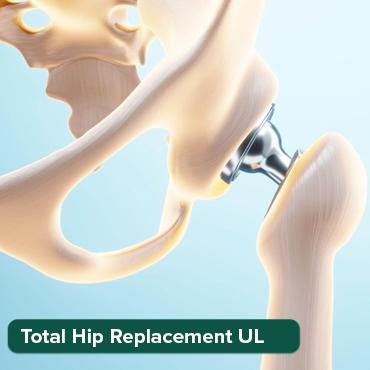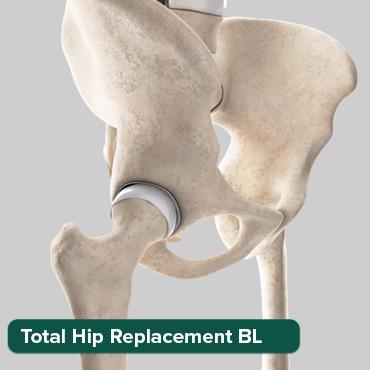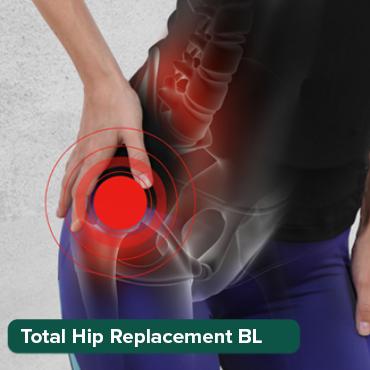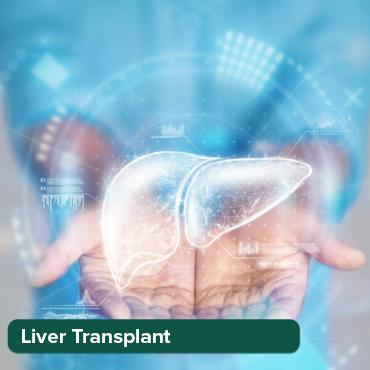
Healthtrip: Your Partner in Understanding & Treating Neuropathic Pain
22 Jan, 2025
 Healthtrip
Healthtrip- Introduction
- Pain Medication
- Medications Targeting Inflammation
- Medications for Neuropathic Pain
- Managing Side Effects of Pain Medication
- Personalized Pain Management
- Conclusion
Pain, a universal human experience, can sometimes become a persistent and debilitating condition, particularly when it stems from nerve damage or dysfunction. This type of pain, known as neuropathic pain, is often described as burning, tingling, or shooting and can significantly impact one's quality of life. At Healthtrip, we understand the complexities of neuropathic pain and aim to empower individuals with the knowledge about the types of medications that may help manage this condition. This blog post delves into the world of pharmacology, explaining the science behind several medications and relating this to the treatment plan.
Introduction
Pain, an experience as universal as a sunrise, can sometimes dig its claws in, becoming a relentless and disabling force, especially when it’s rooted in nerve damage or dysfunction. We call this neuropathic pain, and it's often described as burning, tingling, shooting – like tiny electrical storms raging beneath the skin. The effects are more than just physical discomfort. This sort of pain can seep into every facet of one’s life, casting a long shadow on overall well-being, affecting sleep, mood, and the ability to enjoy everyday activities. At Healthtrip, we deeply understand that neuropathic pain is not a simple matter; it’s a complex, multi-layered challenge. It's like a tangled knot, where pain signals become distorted, amplified, and seemingly never-ending. That’s why we are committed to empowering individuals like you with the knowledge and understanding necessary to navigate this complex condition. This blog post will serve as a detailed roadmap, taking you on a journey through the world of pharmacology as it relates to neuropathic pain and explaining the science behind many medications that may help in your treatment strategy and in getting back to living a full and pain-free life. In addition to the medical strategies discussed next, Healthtrip supports a holistic treatment approach, utilizing mental and behavioral management tools as well as interventional pain procedures, but in an effort to break down a very complex subject, this blog will be focusing solely on pharmacology.
Transform Your Beauty, Boost Your Confidence
Find the right cosmetic procedure for your needs.

We specialize in a wide range of cosmetic procedures

Pain Medication
The first line strategy to address pain of any kind is with analgesics. These medications, though are aimed to relief the symptoms rather than the underlying cause, can offer much relief. Analgesic medications, like skilled firefighters, rush to the scene of pain, not always putting out the source fire but certainly providing urgent symptom relief, so you can continue to live your life. They serve as vital tools in our toolbox, providing that needed breather when the pain becomes too much to bear. While these drugs are not a long-term fix, their ability to quickly target the central causes of pain provides a critical pathway to improved functioning. It's about finding the temporary calm amidst the storm, so that you can focus on more sustainable healing methods.
Traditional Analgesics (NSAIDs, Acetaminophen)
Nonsteroidal anti-inflammatory drugs (NSAIDs), like ibuprofen and naproxen, and acetaminophen are the reliable workhorses of the analgesic arsenal, commonly used to take the edge off various kinds of discomfort. NSAIDs, such as ibuprofen and naproxen, have a two-pronged approach: they reduce pain and inflammation by inhibiting cyclooxygenase (COX) enzymes, which are at the heart of inflammation and pain transmission. They're like diligent gardeners, taming the thorns that prick our senses. Acetaminophen, on the other hand, takes a slightly different approach, working through a mechanism that scientists are still trying to fully understand, but it works wonders for various headaches and mild to moderate aches and pains. It's like the friendly neighborhood handyman who can fix just about anything, though you never know exactly how it works. The good news is both are widely available over the counter and provide accessible relief, when you need it most. However, long-term use should not be taken lightly, as these drugs do have the potential for side effects, from gastrointestinal irritation and bleeding to liver and kidney damage. It’s important to remember that over-the-counter availability does not equal carte blanche; you should always consult your doctor about long-term use. In treating neuropathic pain, these medications are of limited benefit, but they are essential for ruling out other pain processes and provide an excellent first step alongside other approaches to treat pain.
Opioids
Opioids, such as morphine, oxycodone, and fentanyl, are the heavy hitters of pain management, acting on opioid receptors scattered throughout the central nervous system, providing potent relief for severe or acute pain, and sometimes neuropathic pain. Think of them as the superheroes of pain relief, swooping in when other treatments fall short. However, their potent effects are a double-edged sword – with the potential for significant side effects, including nausea, vomiting, constipation, and – most seriously – respiratory depression. It’s like a powerful ally, but one that needs careful watching. Tolerance and dependence are, thus, important concerns with long-term use, requiring close monitoring and appropriate dosing from healthcare providers. The long-term, non-cancer related use of opioids should be avoided whenever possible. It is akin to an emergency parachute - meant for when you are in free-fall, not for routine airplane travel. Nonetheless, in certain cases, like severe-acute pain or difficult-to-manage neuropathic pain, this valuable class of drugs is an important part of your treatment plan, often necessary to get you on the path toward recovery and sustainable healing.
Adjuvant Analgesics (Antidepressants, Anticonvulsants)
Adjuvant analgesics, a fascinating category of compounds, are the versatile multitaskers of pain relief. These medications, initially designed for other purposes, have been found to have a significant analgesic effects. Think of them as understudies in a play, ready to step in and take the leading role when the main actors are indisposed. Antidepressants, mainly tricyclic antidepressants (TCAs) like nortriptyline and desipramine, are known to enhance neurotransmitter activity, which is particularly useful in treating neuropathic pain. While primarily used for mental health conditions, these medications can provide relief of nerve inflammation and pain in ways that are not understood fully. However, like all drugs, they also have a range of side effects, from dry mouth and constipation to drowsiness and potentially dangerous cardiac conduction abnormalities. Similarly, anticonvulsants, such as gabapentin and pregabalin, act by blocking calcium channels on nerve cells, thus decreasing nerve excitability and reducing pain sensitivity. It’s like putting a lid on a boiling kettle, to prevent it from overflowing. Anticonvulsants can be very effective for neuropathic pain, particularly the shooting pains, but drowsiness, especially at higher doses, is a common side effect. These medications are typically well tolerated but are not without risk. It’s important to work closely with your health care team so that any side effects may be minimized. It’s like a finely tuned instrument; the goal is to be as effective as possible with as few side effects as possible.
Medications Targeting Inflammation
Inflammation can sometimes be a major contributor to the development of pain, particularly acute pain. Addressing the inflammatory processes is necessary to provide adequate symptom control. Inflammation is like a fire alarm – helpful when something’s truly amiss, but problematic when it’s going off constantly. By reducing inflammation, we can help calm the "alarm" and alleviate pain. These are usually not treatments for neuropathic pain, but rather other inflammatory issues.
Corticosteroids
Corticosteroids, such as prednisone and dexamethasone, are like the emergency response teams of inflammation management, acting very quickly because of their power to reduce inflammation. They work by decreasing production of inflammatory mediators, thereby reducing the pain associated with an active flare-up. Often they are prescribed for other inflammatory conditions such as autoimmune diseases or severe asthma exacerbations; they have a role in treating neuropathic pain as part of their broader action to treat inflammation. However, high-dose or long-term steroid use is not always the answer, as it carries a high risk of side effects, from weight gain and hyperglycemia to mood changes and bone loss. For these reasons, their use is generally limited to only a few days – long enough to calm the inflammatory storm, but brief enough to avoid or reduce long-term side effects. It’s a high-impact but limited solution, like a quick emergency response rather than a long-term home repair.
Most popular procedures in India
Total Hip Replacemen
Upto 80% off
90% Rated
Satisfactory

Total Hip Replacemen
Upto 80% off
90% Rated
Satisfactory

Total Hip Replacemen
Upto 80% off
90% Rated
Satisfactory

ASD Closure
Upto 80% off
90% Rated
Satisfactory

Liver Transplant Sur
Upto 80% off
90% Rated
Satisfactory

NSAIDs for Inflammation
NSAIDs, which have been mentioned previously as analgesics, at higher doses also possess anti-inflammatory properties that can be beneficial in pain management. Their mechanisms, both as an analgesic and an anti-inflammatory agent, include reduction of inflammation via the inhibition of COX enzymes and subsequent inflammatory mediators. It is like using a combination wrench and screwdriver; the same tool tackles both. However, they are not as powerful as potent as steroids for inflammation management, and their long-term use carries a risk of side effects such as stomach upset, ulcer formation, GI bleeding, and kidney disease. It’s important to weigh these potential side effects against the benefits and, again, to discuss this with your healthcare provider. Long-term use of NSAIDs for either analgesic or anti-inflammatory pur¬ poses, therefore, should not be the first choice and should only be explored after careful assessment of benefits and risks. They are, perhaps, a step up from acetaminophen but not a reliable long-term solution.
Medications for Neuropathic Pain
Neuropathic pain is unlike nociceptive pain, as it is due to damage or disfunction of the nerves themselves, requiring targeted treatment approaches for more effective management. It's as if the electrical wiring has gone awry, sending pain signals even when there’s no physical injury. Therefore it requires a set of medications that addresses the specific causes of neuropathic pain.
Antidepressants for Neuropathic Pain
In addition to their use as adjuvant analgesics (described previously), antidepressants, particularly tricyclic antidepressants (TCAs) and serotonin-norepinephrine reuptake inhibitors (SNRIs), are highly effective for treating neuropathic pain. They have similar mechanisms of action as described previously, working to increase neurotransmitter activity, which helps to reduce pain perception. At doses lower than what may be used to treat depression, these drugs have a direct analgesic effect that can reduce pain. It’s like training a symphony to reduce and control noise – the music is playing, but a sense of calm prevails. These medications, while powerful, can cause dry mouth, constipation, drowsiness, cardiac conduction delay, memory impairment, and orthostatic hypotension, necessitating that they be used with care. It's essential to work closely with your doctor to choose the right medication and dosage, to achieve optimal relief with minimal side effects. Furthermore, it is important to note that SNRIs do not cause as many side effects as TCAs. This should be carefully considered when selecting an antidepressant for treatment of neuropathic pain.
Anticonvulsants for Neuropathic Pain
Anticonvulsants, or anti-seizure medications, are surprisingly effective for neuropathic pain, especially for the sharp, stabbing pains. They work by stabilizing neural cell membranes and reducing the excitability of nerves. It’s like a peacekeeper quieting a group of rowdy nerves. They are also, as noted, used as adjuvant analgesics. They are generally well-tolerated, but higher doses may cause drowsiness, which may have some therapeutic benefit for patients who also have difficulties with sleep. These medications can require a titration period to get to the desired dosage. It’s like training for a marathon – it takes time, patience, and careful planning. Your healthcare team will help you find the optimal dose to achieve pain relief with minimal side effects. Neuropathic pain is often difficult to treat, and different treatment strategies may be required for optimal relief.
Managing Side Effects of Pain Medication
Medications are powerful tools, but they often come with side effects. With pain management, in particular, there are specific side effects that need to be managed proactively. It’s like having a skilled mechanic who not only fixes the machine but also cares for the side effects of his work. We must be prepared for the common side effects of these treatments and have approaches for their management.
Opioid-Induced Constipation
Opioid-induced constipation (OIC) is a very common and often bothersome side effect of opioid use. This common side effect occurs because opioids act on mu-opioid receptors located in the gut, which then reduces gut motility, resulting in constipation. It’s like a traffic jam on the highway of digestion, leading to a standstill. Stool softeners, non-absorbable osmotic agents such as polyethylene glycol, and stimulant laxatives are often used as first line treatment, but many patients will develop "refractory OIC" and require more targeted measures using agents such as methylnaltrexone and naloxegol, which act by blocking peripheral opioid receptors in the gut, thus reducing constipation without affecting the analgesic effects of opioids in the central nervous system. It's like having a traffic cop who is not only redirecting traffic but also making sure the destination is still reached! These approaches, combined with adequate hydration, a high-fiber diet, and exercise may alleviate OIC. However, careful planning, communication with your doctor, and prompt intervention can make all the difference.
Respiratory Depression
Opioids act on receptors in the brainstem that control conscious respiration. They decrease the brain's sensitivity to increased CO 2 in the blood, reduce breathing rate, and reduce respiratory drive. It's like turning down the volume of the body's breathing signals. This complication is uncommon at normal doses, but it is particularly important to monitor vulnerable patients with underlying cardiac or lung disease carefully if high-dose opioids are used. It's like having a watchful guardian, ready to intervene if necessary. Regular monitoring by your healthcare team, keeping an open line of communication, and appropriate adjustment of dosages can reduce the risk of this potentially serious side effect. It is also critical to avoid combining opioids with other medications with similar side effects such as benzodiazepines and other sedative agents.
Monitoring and Overdose Prevention
Opioid overdose is a major public health concern, and monitoring of patients receiving prescription medications is absolutely essential for prevention of overdosage. It’s like having a personal safety system in place, ensuring that the tools designed to help you do not inadvertently cause harm. Prescription management plans, prescription drug monitoring programs (PDMPs), which help to detect duplicate prescriptions, can reduce risks of inadvertent overdosage. Furthermore, naloxone, an opioid-specific antagonist, can be given to patients at high-risk of over¬ dose or also to family members. It's like having a quick antidote at hand, in case things go sideways. This, along with regular check-ups and open communication with your healthcare team, ensures a safer and more effective approach to pain management. It's all about combining the power of pain relief with the wisdom to manage risks appropriately.
Personalized Pain Management
Because everyone experiences pain in a very unique way, a personalized approach is best for all patients with pain, especially for patients with complex neuropathic pain. It’s like a tailor-made suit, precisely fitted to your specific needs. Factors that influence medication choices include potential side ef¬ fects, other medical issues, other drugs that you are currently taking, and cost. Healthtrip is committed to ensuring that your treatment plan is tailored to your individual biology and specific needs. Furthermore, a variety of non-medication options, such as physical therapy, behavioral modification, exercise, nerve blocks, and even surgery, should be considered and customized to suit your needs. It's like a multipronged attack on pain – combining medications, lifestyle modifications, and other therapies to achieve a holistic plan that is uniquely designed for you.
Conclusion
Managing neuropathic pain is rarely simple; it's often a complex journey that requires multiple approaches in combination. Understanding the mechanisms of action and side effects of various medications helps patients make informed choices and work collaboratively with their healthcare providers, which is critical for success in treating this condition. It’s like having a detailed map and a trusted guide to illuminate your path. The goal of therapy is always to alleviate pain and improve patients' functionality and quality of life. Healthtrip is committed to providing not only the information but also the resources that you need to find a personalized and effective treatment plan, so that you can move forward on the road toward healing.
Wellness Treatments
Give yourself the time to relax
Lowest Prices Guaranteed!

Lowest Prices Guaranteed!







